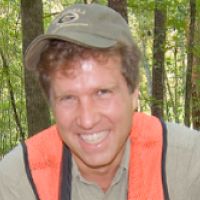Pachon et al., 2017
A new way to look at soil aggregation and aggregating particles: What laser diffraction tells us
Pachon, Julio, Allan Bacon, Kayci Kowalski, and Joshua Butterick, Dan Richter, Aaron Thompson, Madison K. Akers, Joshua Cucinella, Rosvel Bracho-Garrillo, John M. Davis, Sabine Grunwald, Eric J Jokela, Michael Kane, Marshall A. Laviner, Daniel Markewitz, Timothy Martin, Gary F. Peter, C. Wade Ross, and Jason G. Vogel (2017)
Southeastern Biogeochemistry Symposium, Athens, GA, 31 March-2 April 2017
-
Calhoun, COLLABORATOR, GRAD STUDENT
-
Calhoun, INVESTIGATOR
-
Calhoun, INVESTIGATOR
-
Calhoun, Luquillo, INVESTIGATOR, COLLABORATOR
-
Calhoun, INVESTIGATOR
Abstract
Particle aggregation exerts strong control on soil biogeochemical properties and processes. Soil macroaggregates have been extensively studied and are known to control soil interactions with the biosphere, hydrosphere, lithosphere, and atmosphere. Soil microaggregates (traditionally defined as aggregates <250 ìm in diameter) are the building blocks of soil aggregation and have been found to be the largest repository of stable carbon in soil, but are difficult to study given the rudimentary methodologies that include stacked sieving, fractionation, and even selecting with tweezers. These traditional forms of characterization also impede the identification and study of the individual aggregating particles. Here we present results from two projects using laser diffraction to analyze Fine Earth Aggregates (aggregates <2,000 ìm in diameter) and aggregating particles from soils in the southeastern United States.
Analysis of samples from the Calhoun Critical Zone Observatory show that both land use and depth have strong influence on Fine Earth Aggregates and aggregating particles properties such as size and abundance resulting from interactive effects of soil texture and organic matter. We also find that fine-silt have the strongest influence on Fine Earth Aggregates formation. Regional analysis of samples from the PINEMAP Tier II network reveal landscape scale controls on Fine Earth Aggregates and show a correlation between SOM concentration and Fine Earth Aggregates size. Our work using laser diffraction to analyze Fine Earth Aggregates and aggregating particles cracks an exciting door in the study of aggregation and its influence on soil biogeochemistry. Compared to traditional methods our analyses are more rapid and provide greatly enriched and higher resolution data.
Citation
Pachon, Julio, Allan Bacon, Kayci Kowalski, and Joshua Butterick, Dan Richter, Aaron Thompson, Madison K. Akers, Joshua Cucinella, Rosvel Bracho-Garrillo, John M. Davis, Sabine Grunwald, Eric J Jokela, Michael Kane, Marshall A. Laviner, Daniel Markewitz, Timothy Martin, Gary F. Peter, C. Wade Ross, and Jason G. Vogel (2017): A new way to look at soil aggregation and aggregating particles: What laser diffraction tells us. Southeastern Biogeochemistry Symposium, Athens, GA, 31 March-2 April 2017.
 This Paper/Book acknowledges NSF CZO grant support.
This Paper/Book acknowledges NSF CZO grant support.
Explore Further





